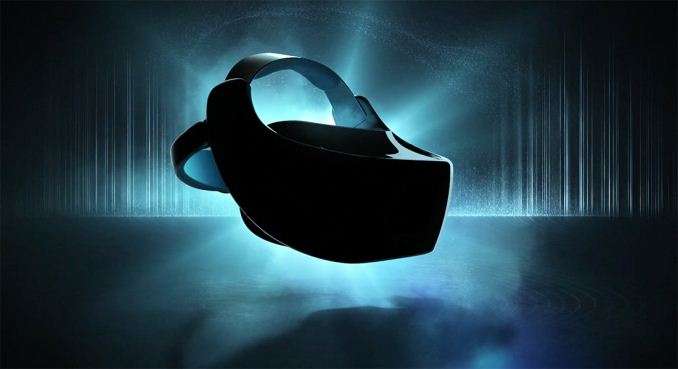HTC Announces New Standalone Vive VR Headset with Google Daydream Support
by Matt Humrick on May 17, 2017 3:00 PM EST
Today at Google I/O 2017, Google and HTC announced a new Daydream VR compatible Vive headset. This new device in the Vive family is a standalone unit that does not require a PC or a smartphone to power the experience and is completely wireless. HTC says that this will be one of the first standalone headsets to support Google’s Daydream platform, which implies other headsets are coming too.
HTC is not revealing much about its new Vive right now. The hardware configuration is unknown, but Qualcomm has been hinting at several standalone VR headsets coming this year that will be using its Snapdragon 835 SoC, which would seem to be a good fit for the Vive. Battery size was not specified either, but without the need to carry an entire smartphone in the headset it should be able to put that volume and weight savings towards a battery that’s larger than typically found in a 5.5-inch phone. It will support the new Daydream WorldSense motion tracking, though.
The standalone Vive will be available “later this year” for an unspecified price.










14 Comments
View All Comments
vladx - Wednesday, May 17, 2017 - link
As long as resolution per eye is still so poor, I have no interest in VR.zepi - Wednesday, May 17, 2017 - link
Snapdragon 835 supports 4K resolution to both internal and external display. Assuming those can be drawn from two separate framebuffers, it should be possible to output 2160x2400 as stereo. Is vive / oculus resolution quadrupled.vladx - Wednesday, May 17, 2017 - link
I'll wait for when 7680x2160 arrives, which is basically 4k per eye.Yojimbo - Wednesday, May 17, 2017 - link
I believe vladx is referring to the rendering resolutions. Try rendering a game in 4K resolution on a Snapdragon 835... If they want to render something at 90 fps per eye they will need a pretty low resolution and/or low visual fidelity. I guess the HMD is not for gaming, but I wonder what it is for, then. I think all VR applications need more realism than what the Vive and Oculus provide - more accurate particle, acoustic, and lighting simulation - not less. Surely this is mainly a technology demonstration and not a useful product.vladx - Wednesday, May 17, 2017 - link
Would a 2x835 setup work for 7680x2160 without latency being an issue? I don't need FPS games to enjoy VR so maybe less intensive games and applications should be fine.Qwertilot - Wednesday, May 17, 2017 - link
Not games no. Stuff like Google earth virtual tourism etc though...... Being totally self contained is even a big plus for that, esp if combining with a year Millie such like.Education too I suppose.
jjj - Wednesday, May 17, 2017 - link
Google mentioned working with Qualcomm, HTC and Lenovo in their extra boring I/O keynote.Your point about battery is a bit odd, it's an indoors only device and not much of a point for large batteries, in fact less would be better - that's true for the next decade. Removable battery would be good though.
Qualcomm does mean an excessive focus on 4G and this device doesn't even need 4G so it will cost some 10% more than it should. HTC means poor choices, very high price and no long term support (LOL).
webdoctors - Wednesday, May 17, 2017 - link
How can this do proper VR? My GTX660 is no where near powerful enough for VR, I think only think right now are 1070+ cards. Its pure magic to be able to put that into a headset formfactor.Whats daydream VR? Is that the waterdown version of VR, like how someone says 3D FPS and you think crysis but when you launch the program Doom 1 shows up? Is augmented reality substantially less power hungry?
mode_13h - Thursday, May 18, 2017 - link
Daydream VR is a Google standard for mobile VR, including both APIs for apps and hardware specs. I think Snapdragon 810 was the first that could support it. Yes, the graphics are pretty basic.It also doesn't require positional tracking, but the new HMDs will support that.
xunknownx - Thursday, May 18, 2017 - link
pretty sure this will be no different from having VR on your phone.except instead of inserting your phone into the headset, everything is already built into the headset.